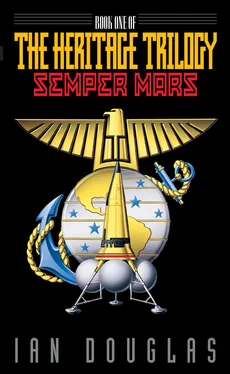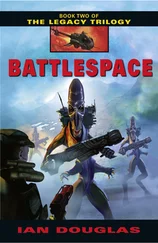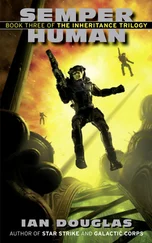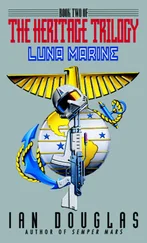“But there is good in the old ways, Yukio.”
He nodded. “Yes. We must find a way to continue the growth of the past one hundred years without losing that which makes us what we are. It is…difficult.
“When we planned this trip, it was with the understanding that we would be traveling together, that I would introduce you to my family, yes, but also that I would show you around the country. This I can no longer do. I will probably be free from duty most evenings, but Tanegashima is six hundred kilometers from Kyoto. Even traveling by hydrofoil and maglev, it would be impossible for me to come home for anything less than a weekend.”
“But couldn’t I meet you there?” Kaitlin countered. She polished off the last of her package and washed it down with a slug of kiwi drink. “You’re right, it’s a long way from Kyoto, but your home’s not the only possibility. If I couldn’t actually go to the base, maybe I could meet you at Kagoshima or Miyazaki. There are probably youth hostels there, same as there are in Kyoto.”
“But still I would be working, and I do not even know if I will have evenings or weekends off.”
“When do you have to report? What day?”
“A week from Monday.”
“Well, then we’d still have three days together, I’d get to meet your parents, your family, and after that…You seem to have forgotten that I have my own reasons for wanting to go to Japan.”
Yukio picked up his stone again and continued his scraping. “You truly wouldn’t object to being on your own in my country?”
She raised one eyebrow. “Is my Nihongo that bad?”
He grinned and tossed the stone at her. “You speak it fluently, and you know it.”
“Precisely. So we leave next Thursday as planned. Right?”
“One final question. These are…dangerous times. Do you really think it will be safe for you to travel to a country allied with the UN?”
“The idea of war over Mars is ridiculous, Yukio. Mexico, I’ll grant you, is a problem, with the Aztlan question and everything, but even if that flares up, I can’t see Geneva putting Japanese troops on American soil to deal with it. Look, I know our countries are technically on different sides, but Japan has resisted the UN-sanctioned embargoes. We’re still trade partners. I just can’t see that there would be a problem. It’s not as though we’re talking about going to Colombia or France!”
Yukio shook his head. “I did not want to prevent you from going to Japan, but I wanted to make sure that you knew what the situation was.”
Kaitlin grinned. “Yukio, my love, you couldn’t have kept me from going to Japan if you’d tried, and that’s not my Western individualism talking. That’s money talking. Maybe rich kids like you can contemplate with equanimity losing a couple thousand bucks on a canceled SCRAMjet fare, but I can’t. I’ve been saving up for a trip to Japan ever since I was old enough to rake leaves, and I’m gonna be on that Star Raker next Thursday, whether you’re there or not.”
FRIDAY, 11 MAY
United States Embassy
Mexico City, República de
México
1453 hours local time
Sergeant Gary Bledsoe, USMC, stood at his sandbag-encircled post on the portico outside the Embassy Residence, watching uneasily as the crowds gathered in the plaza beyond the front gate. Many carried signs, some in Spanish, most—displayed for the reporters and vidcams—in English. YANQUIS HANDS OFF MARS! one read. ALIEN TREASURES ARE FOR ALL! read another. Some of the demonstrators evidently were voicing their support for Aztlan, an Hispanic homeland to be carved out of Mexico’s northernmost states—and the US Southwest. Tensions with Mexico had been at the boiling point since 2038, ever since the UN declared a plebiscite to be held in August of this year; the United States had already announced that it was not signatory to the agreement that had called for a vote on independence within its own territorial boundaries.
Occasionally, a rock or bit of garbage sailed over the high stone wall that fenced off the embassy compound. Someone, Bledsoe could hear, was haranguing the crowd in Spanish over a shrill and feedback-prone PA. He couldn’t tell what was being said, but the crowd evidently approved, judging from the full-throated roar that followed each emphatic statement.
“Man, what’s bitin’ them?” Corporal Frank Larabee, standing at Bledsoe’s side, said nervously.
“What’s the matter? Don’t you download the netnews?” Bledsoe said, his tone bantering. “They’re afraid we’re out to loot the Ancients’ ruins on Mars and get all the good stuff for ourselves.”
“Yeah? So what’s that got to do with us?”
“The Ugly American, guy. Haven’t you heard? We’re getting uglier every day.”
“Ugly?” Larabee patted his M-29 assault rifle. “I’ll show ’em ugly.”
“Easy there, Bee,” Gary said. “I haven’t heard a weapons-free, yet. You just be damn certain your toy’s clean.”
Both Marines were wearing their Class-Threes, low-tech, camouflaged helmets and kinevlar torso armor. Normally, of course, they’d have been in their Class-As, the full-dress blues with red-and-white trim that had been the uniform of Marines on embassy guard duty for well over a century now, but as the Mexican crisis had exploded into this ongoing riot, the orders had come down to go to battle dress.
The orders had also allowed them to carry loaded weapons, though they still had to wait for a release order to lock and load or open fire, even if they were fired on first. For a while there, a couple of weeks ago, the embassy Marines had been going around with unloaded rifles. The joke going the rounds at the time had been that the boxy, plastic M-29s weren’t properly shaped to serve as decent clubs, so if a Marine was attacked, his best bet was to give his rifle to his attacker, then kick the bastard in the kneecap while he was still trying to figure out how the adtech weapon worked.
The M-29 ATAR, or advanced-technology assault rifle, was a direct-line descendent of the German-made G-11s of the last century, firing a 4.5mm ablative sabot caseless round with a muzzle velocity of over a kilometer and a half per second. With each bullet embedded in a solid, rectangular block of propellant, there was no spent brass with each shot, and no open ejection port to foul with dirt, sand, or mud. The weapon was loaded by snapping a plastic box containing one hundred rounds into the loading port in the butt, a “bullpup” design that resulted in a rifle only seventy centimeters long and weighing just four kilos. The ’29 looked like a blocky, squared-off plastic toy with a cheap telescope affixed to the top and a pistol grip on the bottom…which was why the men and women who carried them referred to the weapons as their toys.
The caseless ammo was both the M-29’s greatest strength and its biggest weakness. The lack of shell casings to feed through an ejection port gave the rifle an incredibly high cyclic rate of twenty-five hundred rounds per minute, so fast that a three- or five-round burst could have the bullets on their way and dead on-target before the recoil had affected the shooter’s aim. On the downside, though, the firing chamber was easily fouled by chemical residues from the propellant blocks. The weapon used a clean-burning propellant, but there was always some gunk left over when it burned, and without an ejection port or shell casings, that gunk built up fast…fast enough to degrade the rifle’s performance after only a couple of mags.
The Corps, which lived by the rule that the rifle was the whole reason there was a Marine in the first place, met this weakness with typical directness. Every Marine took a perfectionist’s care of his weapon, learning to field-strip and clean it under the most extreme and dangerous of conditions, to do it fast, and to do it right. “Aw, he’s got shit up his chamber” was by now well-established Marine slang for someone who didn’t know what was what, who hadn’t gotten the word, or who didn’t know what the hell he was doing.
Читать дальше












